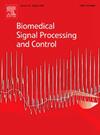基于知识驱动的证据融合网络的胰腺肿瘤CT图像分割
IF 4.9
2区 医学
Q1 ENGINEERING, BIOMEDICAL
引用次数: 0
摘要
由于复杂的解剖结构和多样的肿瘤表现,准确的胰腺肿瘤分割仍然具有挑战性。本研究提出了一个知识驱动的证据融合分割网络(KEFS-Net),该框架系统地将医学报告中的放射学和解剖学知识与成像特征相结合,以提高分割精度。KEFS-Net由三个关键部分组成:(1)利用大型语言模型、离散信息瓶颈和交叉关注的知识驱动注意力网络,通过捕获医学报告中的信息特征来增强CT图像分割性能;(2)基于Dempster-Shafer理论的证据融合策略,通过评估文本知识与图像预测之间的一致性来优化分割结果;(3)一种掩模学习方法,确保在不完整肿瘤描述的临床场景中具有鲁棒性。在医学分割十项全能(MSD)数据集和浙江大学医学院第一附属医院(FAH)的外部临床数据集上对该框架进行了评估。实验结果表明,该方法在MSD和外部数据集上的肿瘤分割准确率分别为59.10%和59.42%。该方法在处理不同的肿瘤特征,包括大小变化、边界模糊和复杂的解剖位置方面显示出特别的优势。这种知识驱动的框架代表了通过多模式集成利用领域知识来改进胰腺肿瘤分割的重大进步。我们的代码可在https://github.com/Singlesnail/KEFS-Net上获得。本文章由计算机程序翻译,如有差异,请以英文原文为准。
A Knowledge-Driven Evidence Fusion Network for pancreatic tumor segmentation in CT images
Accurate pancreatic tumor segmentation remains challenging due to complex anatomical structures and diverse tumor appearances. This study presents a Knowledge-Driven Evidence Fusion Segmentation Network (KEFS-Net), a framework that systematically integrates radiological and anatomical knowledge from medical reports with imaging features to enhance segmentation accuracy. KEFS-Net consists of three key components: (1) a knowledge-driven attention network that leverages large language models, discrete information bottleneck, and cross-attention to enhance CT image segmentation performance by capturing informative features from medical reports, (2) an evidence fusion strategy based on Dempster–Shafer theory that optimizes segmentation results by evaluating the consistency between textual knowledge and image predictions, and (3) a masked learning approach that ensures robust performance in clinical scenarios with incomplete tumor descriptions. The framework was evaluated on both the Medical Segmentation Decathlon (MSD) dataset and an external clinical dataset from the First Affiliated Hospital (FAH) of Zhejiang University School of Medicine. Experimental results demonstrate superior performance compared to state-of-the-art methods, achieving Dice of 59.10% and 59.42% respectively for tumor segmentation on the MSD and external dataset. The approach shows particular strength in handling diverse tumor characteristics including size variations, boundary ambiguity, and complex anatomical locations. This knowledge-driven framework represents a significant advancement in leveraging domain knowledge through multi-modal integration for improved pancreatic tumor segmentation. Our code is available at https://github.com/Singlesnail/KEFS-Net.
求助全文
通过发布文献求助,成功后即可免费获取论文全文。
去求助
来源期刊

Biomedical Signal Processing and Control
工程技术-工程:生物医学
CiteScore
9.80
自引率
13.70%
发文量
822
审稿时长
4 months
期刊介绍:
Biomedical Signal Processing and Control aims to provide a cross-disciplinary international forum for the interchange of information on research in the measurement and analysis of signals and images in clinical medicine and the biological sciences. Emphasis is placed on contributions dealing with the practical, applications-led research on the use of methods and devices in clinical diagnosis, patient monitoring and management.
Biomedical Signal Processing and Control reflects the main areas in which these methods are being used and developed at the interface of both engineering and clinical science. The scope of the journal is defined to include relevant review papers, technical notes, short communications and letters. Tutorial papers and special issues will also be published.
 求助内容:
求助内容: 应助结果提醒方式:
应助结果提醒方式:


